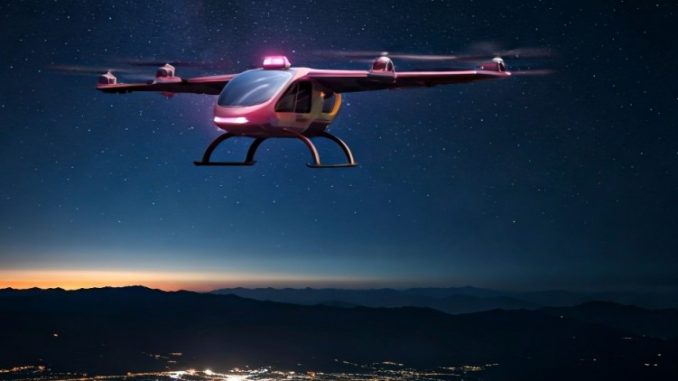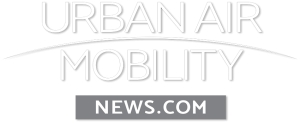
By Philip Butterworth-Hayes
As the concrete for the foundations of the USA’s first vertiports is being poured into the ground, advanced air mobility companies – including eVTOL operators and manufacturers and vertiport developers – are facing an increasing number of state-based rules and regulations which they will need to take account of in developing their eVTOL networks.
The most critical of these policies have been referenced and sourced in the latest edition of the AAM regulations, standards, CONOPS and roadmaps for passenger-carrying operations Guide.
Florida has by far and away the most detailed AAM policy and regulatory guidelines of any US state. Its Advanced Air Mobility strategy and its Land Use Compatibility and Site Approval Guidebook give clear guidance to vertiport developers of local zoning requirements – as well as providing a very good high-level view of how local government regulations and policies should apply to the AAM sector. This reads. “The primary roles of the Local Government in AAM are to determine how AAM fits into their community and to develop appropriate zoning ordinances that allow for vertiport development in line with the comprehensive plan and values of their community.”
There are now 36 members of the US National Association of State Aviation Officials (NASAO) working within the organisation to harmonise policies and services within the AAM sector, and in August this year NASAO published three white papers (Overview of the Collaborative and Role of the States, Utilizing Public General Aviation Airports for Advanced Air Mobility, Key Considerations of Physical and Digital Infrastructure and Exploring Minimum Service Levels).
These give important first principle policy overviews – but states have their own AAM priority concerns and are having to forge ahead with more detailed AAM related work, including researching the electrification requirements which vertiport construction will place on the state’s strategic energy plans; deciding on whether vertiports should be non-exclusive; deciding on whether or not to allow flying cars to take off from public roads; charging/licensing issues for AAM aircraft and vertiport operators; and deciding on the conflicting rights of property owners and AAM aircraft operators.
Georgia, Minnesota, North Carolina, Ohio, Oklahoma, Oregon, Tennessee, Utah, Washington State among others have also develop AAM strategies which extend state involvement in the AAM industry far beyond zoning issues. Cities like Los Angeles, too, are starting to develop their own local AAM rules.
Some of these policies are accelerators but others will provide obstacles to advancing AAM operations.
For Georgia, a key consideration is ensuring vertiport development is integrated within wide energy strategy. Its Advanced Air Mobility Study Blueprint and Action Plan includes the creation of a joint Georgia Power and GDEcD Vertiport Site Selector Tool, ensuring AAM is included in the planning for statewide electric mobility and integrating AAM into the work of the statewide electric infrastructure planning efforts. According to the plan:
“Georgia National Electric Vehicle Infrastructure (NEVI) Deployment Plan is derived from the 2021 Infrastructure Investment and Jobs Act. The plan outlines how Georgia intends to invest its share of the federal funds to deploy a network of electric vehicle charging stations. These federal funds are not available for electric aircraft chargers, but funds may be made available for this use in the future. Incorporating electric aircraft charging into the NEVI will help to identify possible locations where these chargers will have the most impact, especially as it relates to co-locating electric vehicle and electric aircraft charging.”
Current gaps in understanding how zoning policies should be applied to vertiport site selection have recently been highlighted In Washington State’s Department of Transportation “Vertiports Land Use Compatibility Supplement” which proposes new, more customized land use compatibility zone planning for vertiports. The study notes:
: “…existing aviation infrastructure guidelines do not adequately account for the unique operational characteristics of eVTOLs, highlighting the need for revised zoning parameters and compatibility zones specific to vertiports. By proposing a multi-tiered safety zoning framework, the study offers precise, evidence-based recommendations that enhance safety, minimize noise impacts, and promote environmental sustainability. This work equips stakeholders with practical tools to support the safe and effective integration of advanced air mobility infrastructure into complex urban landscapes, ensuring that vertiport development aligns with community needs and urban planning best practices.
Meanwhile, in 2023, the Oregon Legislature passed House Bill 2834 to prevent local governments from granting exclusive rights to develop or control vertiports, a move intended to foster competition and open the market for AAM. The legislation passed during the 2023 regular session, prohibits the state from giving a single operator an exclusive franchise for a vertiport within its jurisdiction.
In 2024 Minnesota became the second state, after New Hampshire, to make provisions for flying cars/roadable aircraft. But according to the provisions: “Operators may not take off or land on public roads unless it is an emergency, an exception that has been open to other light aircraft.”
Meanwhile, Oklahoma has committed to “establish a minimum annual threshold for advanced mobility investments for an Infrastructure Investment Prioritization Program and “Leverage the Advanced Mobility Council (AMC) to prioritize capital investment funding for an Infrastructure Investment Prioritization Program and support proposal decision making.”
Utah in its Advanced Air Mobility Infrastructure and Regulatory Study is planning to build a central UTM hub to manage AAM drone and eVTOL operations. “An aerial traffic operations center can serve to apply UTM policies and enforce rules as necessary,” says the plan. “As Utah looks toward a lane-based approach for unmanned traffic management, most operations can be automated. However, monitoring will be required due to inevitable unexpected events. For initial operations, existing infrastructure in the Division of Aeronautics building may be sufficient, but additional staff and hardware may be required. In phase of its AAM plan (circa 2027) it has assumed the creation of a vertihub, two vertiports and a vertipad to support operations in the Salt Lake Valley, Ogden and Provo – and provided detailed costings for these.

But the Utah study also dives deeply into how the state might charge AAM industry for state services.
“The primary sources of revenue for the state aviation system are the aviation fuel tax and aircraft registration fees,” said the study. “The fuel flowage fee is one of the primary sources of revenue for airports….With the advent of electric aircraft, a new method for calculating tax on electricity that is used as aviation “fuel” will be needed.”
It is also considering the pros and cons of levying an AAM aircraft sales tax.
“Aircraft sales taxes, including sales and use taxes for aircraft-related purchases and aviation maintenance labour are open for discussion as sources of revenue to maintain the AAM system. Some states, such as South Carolina, have exempted the sales and use tax on aircraft parts and labour. Other states channel taxes from aircraft sales into their aeronautics-restricted accounts. Taxes from the sale of advanced air mobility aircraft, and parts and labour, could be channelled into an AAM-restricted account to help cover the cost of maintaining the system.”
Finally, the Utah study has highlighted the issue of the state legislature ruling on the conflicting rights or property owners and AAM aircraft operators regarding aircraft flying at low level over property – often called “avigation easements”
“The Legislature might consider one of several avigation easement definitions such as: “A surface and overhead avigation easement consists of an agreement with property owners to cede air rights over their property to the government,” said the Utah study. “These easements restrict the property owners from building or having obstacles (e.g., trees) above specific heights, or elements (e.g., ponds that may attract birds) that may prevent safe flight paths for aircraft. It conveys rights for aircraft to cause noise, vibrations, fumes, deposits of dust, and fuel particles (incidental to the normal operation of aircraft).” or, H.B. 327 (2022) defined “avigation easement” as an easement permitting unimpeded aircraft flights over the property subject to the easement, and includes the right: (a) to create or increase noise or other effects that may result from the lawful operation of aircraft; and (b) to remove any obstruction to such overflight. The Legislature might also consider ensuring that avigation easements exist in the airspace above all state property, all roads, rails and rivers, and all rights-of-way and easements currently existing within the state or other political subdivisions; and shall apply to all future property, roads, rails, rights-of-way, and easements.”
For most states, these issues are for the moment topics for discussion, rather than decisions. And most will look to California, New York and Florida where the first AAM networks are being developed for guidance. But each state is different, with its own policies on aviation, taxation, energy and transport. And time is short. For AAM network developers, any uncertainty over state charging regimes and policies around non-monopolistic access to vertiports will be critical to their initial service business plans.
The AAM regulations, standards, CONOPS and roadmaps for passenger-carrying operations Guide. gives subscribers an up-to-date view on concepts of operation, policies, regulations and standards being developed by regulators and industry standards bodies around the world. The Guide breaks down the market into the follow areas: AAM Policy, CONOPS and roadmaps; AI, autonomy; airspace management; rules for eVTOLs and other AAM aircraft, including propulsion systems; maintenance rules; rules for vertiports and infrastructure, including charging; the role of non-aviation stakeholders. It identifies the key regulations and roadmaps for these areas nationally and internationally and is available at a discounted rate for www.urbanairmobilitynews.com and www.unmannedairspace.info readers.

